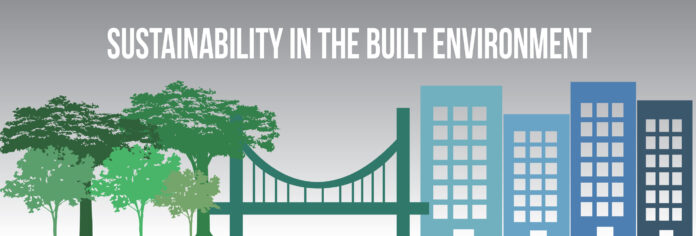 As our society continually falls deeper and deeper into ecological debt toward Mother Nature, humans are presented with the daunting task of restoring balance. One trend to help solve this problem that is gaining popularity by engineers and designers is the green roof. Simply put, a green roof is a specially engineered, layered rooftop that supports plant life.
As our society continually falls deeper and deeper into ecological debt toward Mother Nature, humans are presented with the daunting task of restoring balance. One trend to help solve this problem that is gaining popularity by engineers and designers is the green roof. Simply put, a green roof is a specially engineered, layered rooftop that supports plant life.
The green roof is an aesthetically pleasing implementation of natural materials within the built environment. The concept of green roofs can be dated back to ancient times. The types of green roofs these people used were basically caves or shelters buried beneath land that supported plant life. The main benefits of these roofs were for protection from the elements, and increased cooling and heating capacities. This basic concept wasn’t applied to modern green roof practices until the 1970s by German scientists. The motivation of these roofs came about via the necessity for roof irrigation during the increase in roof garden popularity. Naturally, the garden roofs were transformed into the modern form of the green roof.
The burning question here is why we are not implementing this science. Although the green roof is gaining popularity, less than 1 percent of North American roofs actually exploit the substantial benefits. This number is embarrassing, especially when compared to Germans. Over 20 percent of all German roofs are “green.” The German government has even implemented taxes for certain cities that don’t have these roofs.
In addition to the introduction of natural beauty, a green roof has extremely positive environmental and ecological benefits:
One huge benefit of the green roof is that it literally has the potential to cool down cities. In larger cities, building density is very high and parks/open space limited. Due to the material nature of concrete the buildings absorb heat. Typically, large cities are approximately 10 degrees Fahrenheit hotter than the surrounding areas. With a green roof implementation, the big city heat increase is strongly combatted.
Another huge benefit generated by the green roof is the notion of clean rainwater. Traditional roofs contaminate rainwater due to the water coming in contact with metal piping, dirt, cement, etc. This dirty water is harmfully released into the environment. A green roof however, has a fully designed layering system that filters rainwater while subsequently feeding the plants on the surface. The core notions of sustainability are presented here: A man-made building that acts as a natural filtration system, where we are doing the work of nature with no negative effects.
Additionally, green roofs are a perfect medium for allowing wildlife to be naturally integrated within the built environment. Traditional roofs are a barren deathtrap with respect to wildlife habitats; the green roof, however, is the exact opposite. The concept of wildlife attraction is coupled with the fact that green roofs improve air quality. Also, internal heating and cooling during the winter and summer months, respectively, are extremely reduced due to the insulation provided by the green roof.
The benefits of the green roof are extremely obvious and fundamentally necessary for our planet’s health. The advantageous environmental results are stunning. The worldwide implementations of green roofs are essential to the continued survival of the planet.
Green roofs are not the ultimate solution to the energy crisis, but they do act as a stepping stone in the right direction for complete sustainability. Buildings now have the potential to provide the environment with net positive impact. That’s right, structures that actually act as nature would anyways. Buildings will not be “less bad,” but actually be a positive contributor to environmental and ecological systems as a whole.
BRENT LUND can be contacted at brlund@ucdavis.edu.




